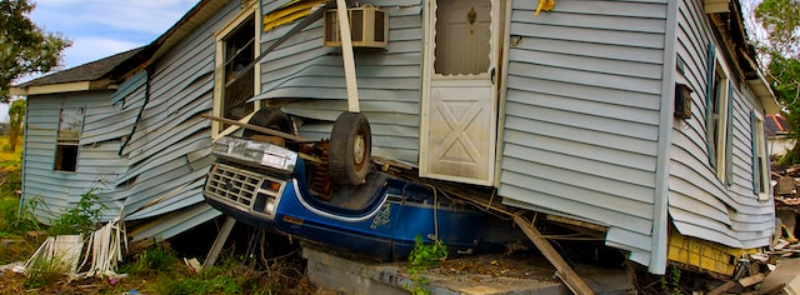
When It Occurs
Every October 13th
Official Website
Timeline
Days Passed (808)
# Hashtags
#InternationalDayForDisasterRiskReduction #DisasterRiskReduction
Annually observed on October 13, the International Day for Disaster Risk Reduction (IDDR) is devoted to heightening awareness about disasters, their effects on living beings, and preventive measures.
Designated by the United Nations General Assembly, October 13 serves as the IDDR to foster a global culture of disaster risk reduction. The 2023 theme for the IDDR was "Fighting inequality for a resilient future." This day celebrates global efforts by individuals and communities to minimize their vulnerability to natural hazards, while also amplifying awareness of the repercussions of disasters and crises on agriculture and food security.
History:
- First Celebrated: The United Nations General Assembly designated October 13 as the International Day for Disaster Reduction in 1989.
- Renamed: In 2009, the UN General Assembly renamed the day to International Day for Disaster Risk Reduction to reflect a broader approach that includes risk reduction measures beyond immediate disaster response.
Date of Celebration:
- Annual Date: October 13
Theme for 2024 (Example): "Reducing Disaster Damage to Critical Infrastructure and Disruption of Basic Services"
Purpose: The primary objectives of International Day for Disaster Risk Reduction include:
- Raising Awareness: Educating individuals and communities about the importance of disaster risk reduction and resilience-building measures.
- Promoting Action: Encouraging governments, organizations, and individuals to implement policies, strategies, and practices that reduce disaster risks.
- Advocacy: Advocating for policies and investments that prioritize disaster risk reduction and resilience in development planning.
- Building Resilience: Strengthening the capacity of communities and nations to withstand and recover from disasters.
Disaster Risk Reduction (DRR) Overview:
- Definition: Disaster risk reduction refers to the systematic efforts to reduce the vulnerabilities and exposure of individuals, communities, and countries to hazards, thereby minimizing the impact of disasters.
- Key Elements of DRR:
- Risk Assessment: Identifying hazards, vulnerabilities, and exposure to determine potential risks.
- Risk Reduction Measures: Implementing strategies and actions to reduce risks, such as land-use planning, infrastructure improvements, and early warning systems.
- Preparedness and Response: Building capacity and preparedness to respond effectively to disasters when they occur.
- Recovery and Rehabilitation: Ensuring swift and effective recovery and reconstruction efforts post-disaster.
Activities and Campaigns: International Day for Disaster Risk Reduction is marked by various activities and campaigns globally, such as:
- Public Awareness Campaigns: Using media, social media, and educational materials to disseminate information about disaster risk reduction.
- Workshops and Seminars: Organizing events to educate stakeholders, including governments, communities, and organizations, on DRR strategies and best practices.
- Simulation Exercises: Conducting drills and exercises to test emergency response plans and enhance preparedness.
- Community Engagement: Engaging local communities in discussions, workshops, and activities to build resilience and promote DRR awareness.
- Policy Advocacy: Lobbying for policies and legislation that prioritize DRR in development planning and resource allocation.
- Global Campaigns: United Nations agencies, international organizations, and NGOs collaborate on global campaigns to address specific DRR challenges and priorities.
Impact: International Day for Disaster Risk Reduction has contributed to:
- Increased Awareness: More people and communities are aware of the importance of DRR and take proactive measures to reduce risks.
- Policy Change: Governments and organizations integrate DRR into policies, strategies, and investments, leading to more resilient societies.
- Capacity Building: Enhanced capacity of communities and nations to prepare for, respond to, and recover from disasters.
- Global Collaboration: Strengthened international cooperation and partnerships in addressing disaster risks and building resilience.
Resources:
- United Nations Office for Disaster Risk Reduction (UNDRR): Provides resources, reports, and toolkits on disaster risk reduction and resilience-building efforts.
- Global Platforms and Initiatives: Platforms like the Sendai Framework for Disaster Risk Reduction 2015-2030 and the Hyogo Framework for Action provide frameworks and guidelines for DRR efforts.
- National Disaster Management Authorities: Government agencies responsible for disaster management offer resources, guidelines, and support for DRR initiatives.
- NGOs and Civil Society Organizations: Many organizations focus on DRR advocacy, capacity-building, and community resilience.
How to Get Involved:
- Participate in Events: Attend local or online events organized for International Day for Disaster Risk Reduction.
- Educate Yourself: Learn about DRR strategies, best practices, and your role in building resilience.
- Support Community Initiatives: Volunteer with local organizations working on disaster preparedness and resilience-building activities.
- Advocate: Raise awareness about DRR issues, advocate for policies that prioritize resilience, and support funding for DRR initiatives.
- Promote Preparedness: Take steps to prepare your family, workplace, and community for potential disasters.
International Day for Disaster Risk Reduction plays a crucial role in promoting resilience and reducing vulnerability to disasters worldwide. By raising awareness and taking proactive measures, individuals and communities can contribute to building a safer and more resilient future.


